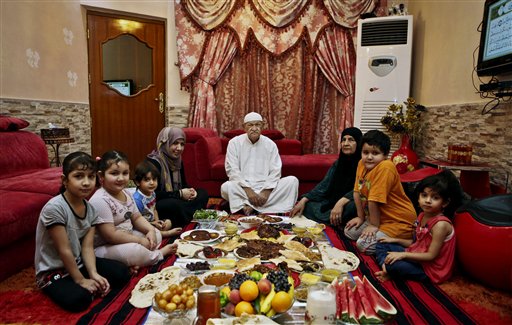As Ramadan fast ends, the feasts begin

An Iraqi family is waiting to break their fast during the hold month of Ramadan in Basra, Iraq. For the millions of Muslims abstaining from food and drink from sunrise to sunset every day during Islam’s holiest month of Ramadan, that first sip of water after a grueling fast is by far the most anticipated moment of the day. AP
For the millions of Muslims abstaining from food and drink from sunrise to sunset every day during Islam’s holiest month of Ramadan, that first sip of water after a grueling fast is by far the most anticipated moment of the day.
In some corners of the world, Muslims are fasting for more than 20 hours a day, depending on when the sun rises and sets in their city. It is a physical and mental exercise meant to draw worshippers closer to God and increase empathy for the poor.
But after a long day of fasting, the moment of pay-off finally comes in the form of “iftar,” the evening meal that breaks the fast. For more than 1,400 years, many Muslims have been breaking fast in the same way the Prophet Muhammad did: with a handful of dates and a sip of water.
Next comes the feast.
Iftar is a social event as much as it is a gastronomical adventure. The celebratory meals give people reason to reconnect with friends and family, and gather around shared platters of food.
Many cultures also share in special culinary delights particular to the month of fasting. Across much of the Arab world, a juice made from sweet apricots is a staple of Ramadan iftars. In South Asia, yogurt-based drinks such as lassi are popular.
In Egypt, charities set up tables on street corners and under bridges for anyone to stop by and enjoy a free iftar. In the Gulf, community leaders and wealthy sheiks open their doors to their communities to come by at all hours of the night for food, tea, coffee and conversation.
Here is a collection of Associated Press photographs of iftars from around the world.
RELATED STORIES
Ramadan rush: Rich Arabs splurge before fasting
Displaced Iraqis fight over food for Ramadan